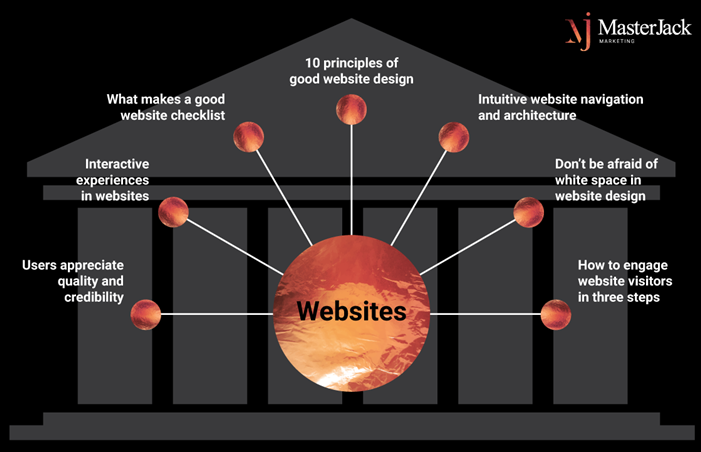You may have clicked on the heading just to answer the question “what the hell are pillars and clusters?” Well, I’ll tell you. It is a strategy used in content marketing so that you don’t have to pay for advertising.

Digital content allows potential customers to discover and engage with you organically (in other words, not paid for advertising such as Google Ads). As they search for topics and concepts relevant to what they want to do or know, they find you and dive deeper at their leisure.
However, the Content Marketing Institute reports that producing enough content is the biggest challenge for marketers.
If you were to write about your business, you could probably do it in one article. You can ensure that this one article is designed to rank for multiple keywords, but it is likely that there is already plenty of competitors doing the same thing.
Using the strategy of pillars and clusters, content marketing would break this one article down into several. Creating more bite-sized pieces of content that cover individual concepts reaches a wider audience and attracts new eyes. This strategy organises all your content into topic categories.
Pillars
A content pillar is a subset of topics or themes which create the foundation for your overall content strategy. A pillar page covers the topic thoroughly and broadly, so a visitor could answer any questions about the topic. It shouldn’t delve too deeply into answering specific questions – that’s what an article/blog post is for.
For example, MasterJack’s pillars include websites, design, content marketing, social media, digital marketing, print & promotion, education, and journey stories. On our Instagram, our pillars are articles/blogs, what we do, our work, testimonials, tips and tricks, and things that inspire us.

Keywords
Once you have your pillars, you’ll need to identify keywords associated with them. Sometimes the most popular queries related to your product or service offering will surprise you. Never assume you know what to write about, let the numbers do the talking.
- Make a list of the most relevant topics in/on your business (about 5-10)
Example: websites - For each topic, make a list of related keywords
Example: good website design - Turn those keywords into a sentence someone would type into Google
Example: What are the 5 elements that make a good website design?
If you are finding it difficult to come up with multiple keywords, try researching related keywords. Put one into google and scroll down to the bottom of the page. You’ll find ‘related search terms’ that you can then add to your list.

Clusters
Clusters are groups of related content that cover a broad subject area. They strategically link internally to each other which, quite simply, eventually lets Google and therefore your readers know that you are an authority (the go to boss) on the topic. Expert Level Note: It is important to ensure you avoid an overlap or a gap in your content – don’t stress about this unless you are a determined perfectionist.
For example, good website design examples, 10 principles of good website design, what makes a good website checklist, interactive experiences in websites, users appreciate quality and credibility, intuitive website navigation and architecture, don’t be afraid of white space in web design… the list can go on.
Summary
The content strategy you choose for your business – whichever one it is, is an ongoing process of translating business objectives and goals into a plan that uses content as a primary means of achieving those goals. You are reading a cluster from a pillar for MasterJack right now – DIY Content Marketing, a series that helps you to do you own content marketing. Our goal is to empower our clients to do it themselves, but if time or skill stops them from doing that, then we are available to help.

Our next article will cover writing valuable and relevant content – how to write your articles.
